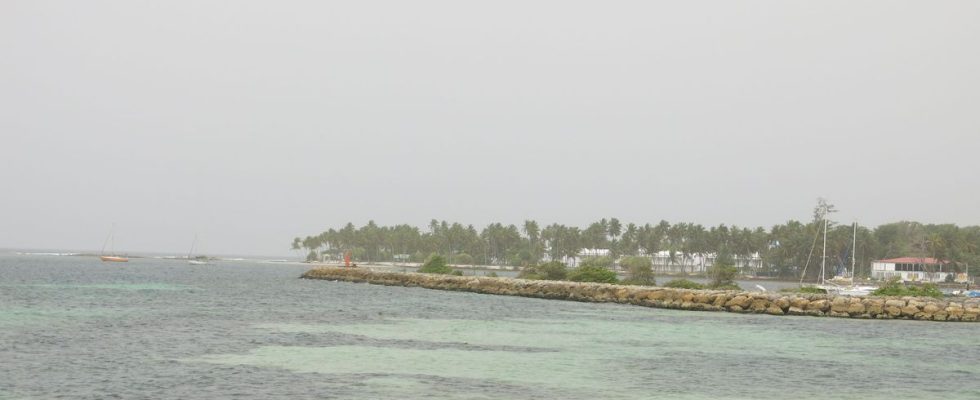Air quality is currently very poor in Guadeloupe. The region has been placed on red alert due to a concentration of fine particles linked to the passage of sand mists over the archipelago since Friday morning, the Gwad’Air monitoring network announced on Saturday.
Concentrations of fine particles less than 10 micrometers in diameter (PM10) in the air “should exceed 80 μg/m3 on average over 24 hours, a value corresponding to the alert threshold,” says a press release from Gwad’Air. According to this approved association responsible for monitoring air quality on the archipelago, the red alert will remain in place this Sunday, “for the persistence of this episode of pollution, due to a forecast of an excess of 50 μg /m3 in PM10”.
A phenomenon visible from April to October
This sand comes from African deserts and more particularly from the Sahara desert. This phenomenon is visible from April to October and tends to strengthen from year to year, with an increasingly significant recurrence, according to specialists.
When these mists occur, the sky in the Antilles becomes milky, opaque and foggy. The physical effects are numerous: difficulty breathing, itchy eyes, a scratchy throat and a strong feeling of heat gripping the inhabitants.
Mists bad for agriculture
To prevent health effects, health recommendations instruct “vulnerable” people to restrict outings, sports and activities near major roads. Pregnant women are particularly targeted by health instructions: in 2019, a study showed a link between premature births in Guadeloupe and exposure to sand mists.
Sand mists are also “according to an international study from 2006”, details the Gwad’air site, fertilizers for the soil because the sand transported is “rich in phosphorus, potassium, calcium and magnesium”. Their role on the growth of sargassum algae is also studied.

